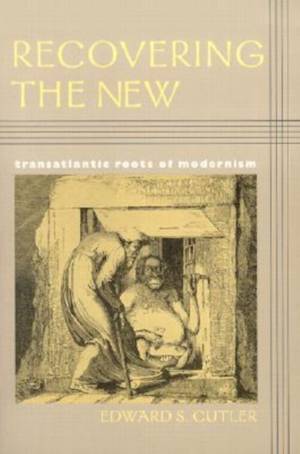
- Retrait gratuit dans votre magasin Club
- 7.000.000 titres dans notre catalogue
- Payer en toute sécurité
- Toujours un magasin près de chez vous
- Retrait gratuit dans votre magasin Club
- 7.000.000 titres dans notre catalogue
- Payer en toute sécurité
- Toujours un magasin près de chez vous
Description
Historians and cultural critics have customarily viewed modernism as a movement with western European origins that established an aesthetic in opposition to mass culture. In sharp contrast to these established views, Edward S. Cutler argues that modernity is best understood as a translantic urban phenomenon and that aesthetic practices which consolidate under modernism in the early 20th century are themselves historically implicated in the very mass culture against which they declared "autonomy." Recovering the New opens with a rich examination of the relation between manifestations of early high capitalism and the mid-19th century emergence of aesthetic modernity. Cutler uses historically-rooted examples such as the debates over paper currency, the rise of quasi-scientific spiritual movements, and the belief in the superior reality of the photographic image, to demonstrate the profound cultural pressure new forms of exchange place upon the very possibility of representation, aesthetic or otherwise, in the era of high capitalism. Turning next to the translatlantic circulation of New York City print culture, especially its daily newspapers, he demonstrates a significant "low-brow" component to modernism. His examination of the urban fiction of Edgar Allan Poe reinforces the connection of New York and Paris, and demonstrates that transatlantic circulation of urban texts is more crucial to the development of modernism than specificities of time or place. A discussion of Walt Whitman's growing ambivalence to industrial modernity closes the book. Looking closely at Whitman's poetic encounter with the New York's Crystal Palace exhibition of 1853, Cutler argues that Whitman's shift away from the temporal present and toward myth marks the beginning of an aesthetic appropriation characteristic of later modernism, which seeks to redeem the present age through recourse to the past.
Spécifications
Parties prenantes
- Auteur(s) :
- Editeur:
Contenu
- Nombre de pages :
- 215
- Langue:
- Anglais
- Collection :
Caractéristiques
- EAN:
- 9781584652717
- Date de parution :
- 01-11-02
- Format:
- Livre broché
- Format numérique:
- Trade paperback (VS)
- Dimensions :
- 153 mm x 234 mm
- Poids :
- 353 g







